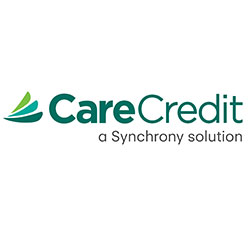Education and Training of the Practice Team
Low-Stress Handling
Many working dogs can be high-energy and reactive to strangers, application of restraint, and medical procedures. Therefore, low stress handling strategies such as calm handling, positive reinforcement, taking breaks when needed, and appropriate use of anxiolytics should be practiced for effective control of service and assistance dogs. These techniques reduce fear and anxiety in the moment as well as for future visits. The net effect is to keep both the veterinary team and the dog safe. Veterinary practices can achieve formal certification through programs such as Fear Free and Low-Stress Handling. 12,84,85 Many certifying bodies provide continuing education and certification of low-stress handling specifically for individuals and veterinary teams.
Understanding the Working Dog Role
It is important for the veterinary team to have a basic understanding of the vast diversity in the specific tasks working dogs perform and the environments in which they work. The veterinary team should be familiar with state, federal, and local regulations regarding public access rights for assistance dogs and remain up to date with the fluid changes. This information influences the veterinarian’s role in authorizing a dog’s presence in flight and public housing.
Every working dog is an individual with a unique set of skills that should not be confused with other types of working dogs. The veterinary team should have a genuine interest in a specific dog’s role and know the specific questions to ask of the handler to learn the role of that individual dog. This approach not only informs the veterinary team of the health risks the dog is predisposed to but also enhances the rapport they build with the handler. Continuing education in the way these dogs work can be achieved by developing ongoing relationships with local agencies, teams, and task forces that train and develop these dogs. These organizations are important resources for advice, experience, and healthcare recommendations and may be willing to provide continuing education to the practice team. Providing opportunities for members of the practice to observe training or participate in local certification events is an excellent strategy to introduce the veterinary team to the working lives of these dogs. It is also crucial to attend continuing education meetings and workshops provided by experts in working dogs or sports medicine. This requires each member of the practice team to have training and education outside of what is “standard” for pet dogs.
First Aid Training and Referrals
Working dogs require extensive training to achieve the skill necessary for their jobs. In a medical emergency, the expectation is that the veterinary practice can provide immediate, top-notch care. Hands-on experience in first aid and triage that is specific for working dogs is invaluable when a working dog presents to a veterinary practice. In addition, many S&R canines work in remote environments where veterinary care may be quite distant. As a result, S&R teams often use field care training and the assistance of EMT-paramedics to provide stabilization care for their dogs. Veterinarians should support this specialized training and actively engage and improve appropriate pre–hospital care activities for these working dogs.86,87 Gunshot wounds in protection dogs, major injuries from falls or environmental exposures, surgical and critical care for GDV or urgent medical or surgical conditions, and respiratory emergencies are situations requiring immediate reaction and specialized medical capabilities for care.
A primary-care veterinary practice may not be equipped for providing 24-hour critical care support for a working dog in critical condition. However, it is important that all veterinary practices provide basic life support and stabilization followed by immediate transfer to a facility that can provide specialized care. Euthanasia in the field or in the veterinary setting should only be considered under the most dire humane and devastating injury circumstances, as this will impact the entire unit, not just the handler. Veterinary care providers must understand that their recommendations will impact the entire service team (police, S&R, working unit). To the extent that is reasonable and possible, the medical care rendered to the service/working dog merits the highest priority and highest capability available. In many organizations, working dogs are assigned rank immediately superior to the handler with whom they partner, serving to reinforce the highest levels of respect and recognition of their shared role and responsibilities. Similarly, end of- life considerations may be impacted by organizational policy and requirements that include but are not limited to chain of command notification, funeral honors, mandatory necropsy and pathology sample submissions, and preferential remains handling and care.
Communications Training
Effective communication is the cornerstone for delivering quality veterinary care to working dogs. It is important to recognize that handlers have various degrees of education, training, and skills, so the veterinary team should tailor communications to that handler’s particular level. This is critical when a handler or client has a disability that may be a barrier to understanding. Strategies such as respectfully asking the preferred mode of communication for an individual who is visually or hearing impaired may be the first step to enhancing the client experience and improving compliance. Opportunities for advanced training in veterinary communication skills as well as communications with individuals with disabilities should be sought to provide exceptional veterinary care to working dogs.88,89







